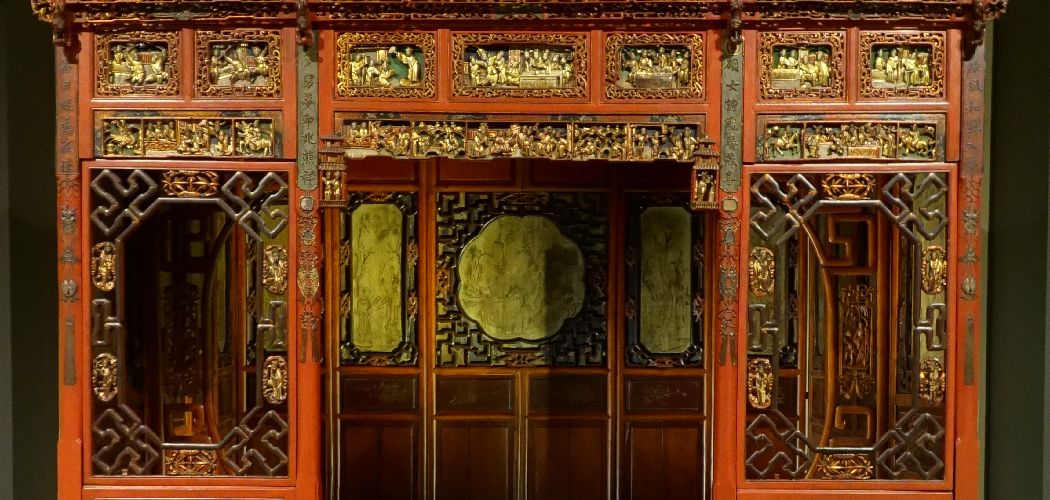Are you an antique collector or someone who is interested in Chinese culture? If yes, then identifying antique Chinese furniture must be a skill you want to acquire. Antique Chinese furniture is not just any piece of old furniture; it holds great cultural and historical value. Here are some tips on how to identify antique Chinese furniture.
Antique Chinese furniture is celebrated for its exquisite craftsmanship, timeless beauty, and cultural significance. However, identifying genuine antique pieces can be a challenging endeavor for both novices and experts alike. This introduction aims to provide essential insights into recognizing authentic antique Chinese furniture. Key factors such as wood type, joinery techniques, stylistic elements, and historical context will be explored, equipping you with the knowledge to discern true antiques from replicas.
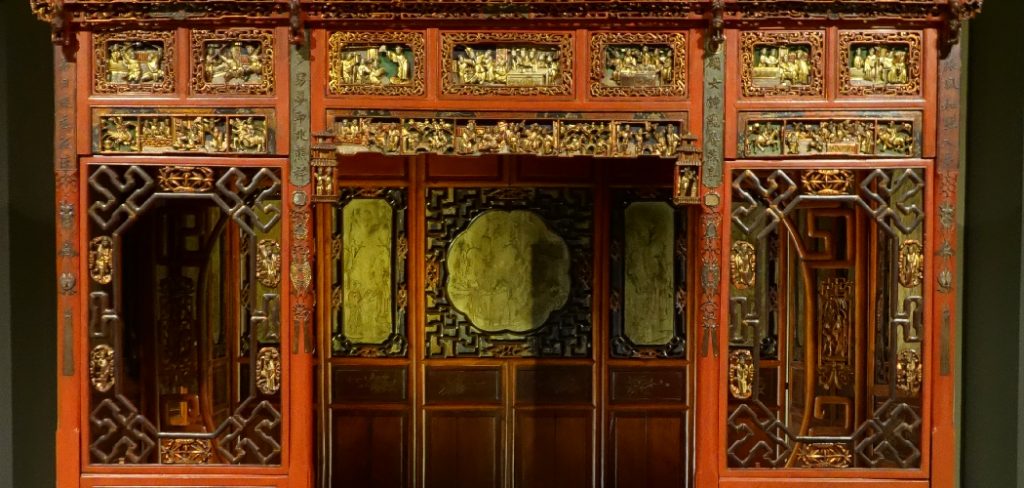
Understanding these aspects enhances one’s appreciation of these works of art and ensures that one’s investment is genuine and valuable.
What Will You Need?
Before diving into the identification process, it is crucial to have some basic tools and equipment. These include:
- A Magnifying Glass or Loupe: This will help you examine small details and markings.
- A Reference Guide or Book on Antique Chinese Furniture: This will serve as a useful resource to compare and identify specific features.
- Adequate Lighting: Proper lighting is essential for spotting intricate details and patterns.
- Protective Gloves: These will protect your hands from potential splinters, chemicals, or oils present in the furniture.
With these tools at hand, let’s move on to the identification process.
10 Easy Steps on How to Identify Antique Chinese Furniture
Step 1: Examine the Wood Type
The type of wood used in antique Chinese furniture can provide significant clues about its authenticity and age. Traditional Chinese furniture typically features hardwoods such as Huanghuali, Zitan, and Jichimu. These woods are prized not only for their beauty but also for their durability and fine grain. A magnifying glass can help you identify the subtle characteristics of these woods, such as the unique patterns and natural imperfections that develop over time.
Step 2: Look for Joinery Techniques
The joinery techniques used in antique Chinese furniture are distinct and highly skilled. Traditional Chinese furniture does not use nails, screws, or glue to hold the pieces together; instead, it relies on intricate interlocking joints. These joints are often hidden from plain sight, so be sure to inspect all parts of the furniture carefully. Some common joinery techniques include:
- Mortise and Tenon Joints: This is the most commonly used joint in traditional Chinese furniture and involves a protruding piece of wood (tenon) fitting into a corresponding hole (mortise).
- Dovetail Joints: These joints feature interlocking wedge-shaped tenons and notches.
- Tongue and Groove Joints: This joint involves one piece of wood with a protruding tongue that fits into a matching groove in another piece.
Step 3: Observe the Style and Design
Antique Chinese furniture is known for its simplistic, elegant designs that are rooted in traditional Chinese culture. Look for elements such as clean lines, balanced proportions, and intricate carvings or engravings. Many pieces also incorporate symbolic motifs such as dragons, phoenixes, or lotus flowers.
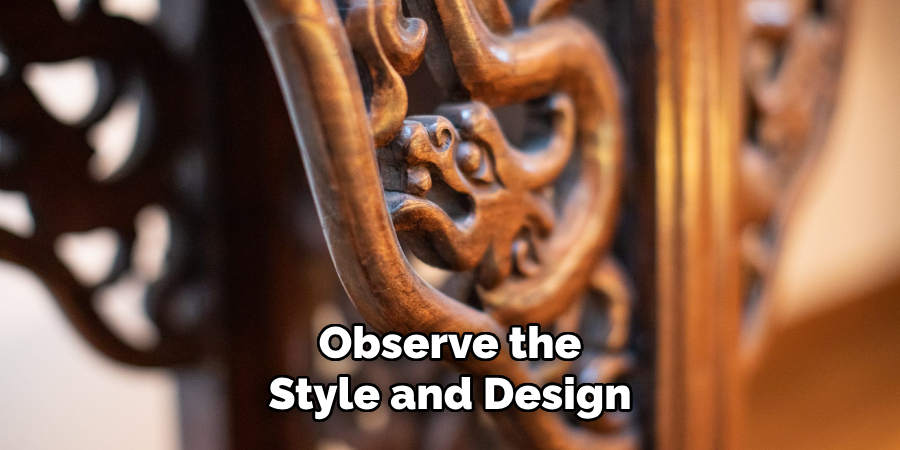
Step 4: Check for Age and Condition
The age and condition of the furniture can also provide valuable clues. Antique Chinese furniture will show signs of wear and tear that are consistent with its age. Look for markings such as scratches, dents, or discoloration that indicate it has been used and aged over time. However, be wary of pieces that appear too pristine or have modern-looking finishes; these may be reproductions made to look old.
Step 5: Investigate the Markings
Markings on antique Chinese furniture can be a telltale sign of its authenticity and provenance. These markings often include the signature or seal of the craftsman, workshop, or dynasty during which the piece was created. Common types of markings include:
- Zhuwen: A red seal or signature usually found on Ming and Qing dynasty furniture.
- Badao or Yinzuo: These markings indicate that the piece was produced by imperial workshops during the Ming and Qing dynasties.
- Carved Inscriptions: Some pieces may have inscriptions carved into them, providing information about the maker, creation date, or original owner.
Step 6: Evaluate the Hardware
The hardware used in antique Chinese furniture can also provide significant insights into its authenticity. Original hardware is typically handcrafted from metals like brass or iron and may exhibit intricate designs or decorative elements. Examine the handles, hinges, and lock plates for signs of age, such as patina or wear consistent with long-term use. Modern reproductions often use machine-made hardware, which may lack the fine details and age seen in antique pieces.
Step 7: Assess the Finish
The finish on antique Chinese furniture can vary depending on the period and region it was crafted. Traditional finishes often include lacquer, natural oils, or waxes applied to protect and enhance the wood. Look for finishes that have aged naturally over time, showing signs of cracking, crazing, or subtle color variations. Be cautious of pieces with shiny, uniform finishes, as these could indicate modern restoration or reproduction.
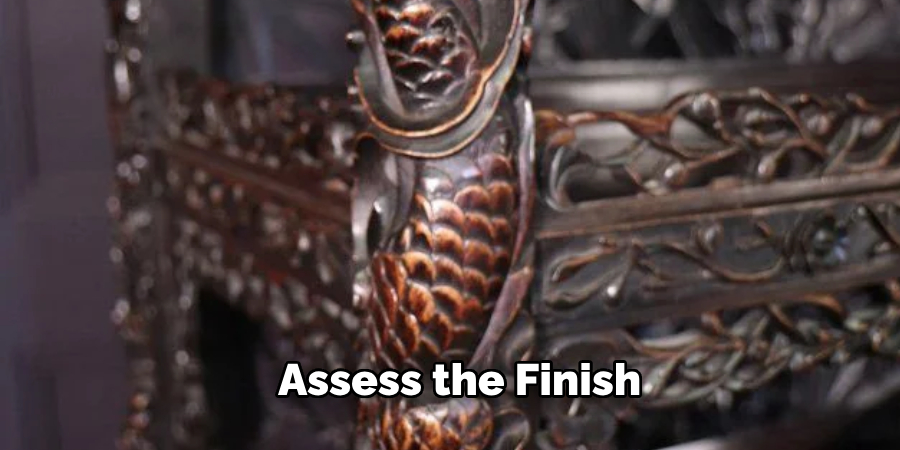
Step 8: Confirm Provenance
Provenance, or the documented history of an item, can significantly bolster the authenticity of antique Chinese furniture. Gather any available information regarding previous ownership, origin, or historical context. This could include sales receipts, certificates of authenticity, or documented appraisals. Provenance supports authenticity and adds to the item’s historical and cultural value.
Step 9: Compare to Authentic Examples
Comparing the piece in question to known authentic examples can be incredibly helpful. Use reference books, museum collections, and verified antique dealers to find genuine antique Chinese furniture examples. Pay attention to similarities in design, construction, and materials. This comparison can reveal subtle differences that might indicate a reproduction.
Step 10: Consult an Expert
If you are uncertain about a piece’s authenticity, consulting an antique Chinese furniture expert is always a wise step. Experts can provide a professional assessment, often identifying details you might overlook. They can also offer valuable insights into the furniture’s market value and historical significance.
With these steps, you are better equipped to identify antique Chinese furniture accurately. Remember, the more you study and handle these beautiful pieces, the more proficient you will become at recognizing the hallmarks of genuine antiques.
5 Additional Tips and Tricks
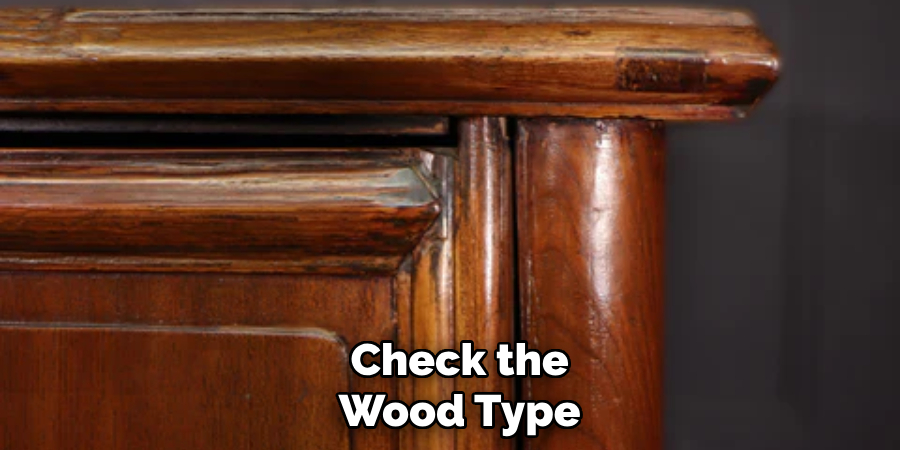
- Examine the Joinery: Traditional Chinese furniture is known for its intricate joinery techniques that do not use nails or screws. Look for mortise-and-tenon joints and dovetail joinery as indicators of authenticity.
- Check the Wood Type: Antique Chinese furniture often uses hardwoods such as rosewood, walnut, and mahogany. Familiarize yourself with these wood types and their grain patterns to better identify genuine pieces.
- Inspect the Carvings: Pay close attention to the detail and style of the carvings. Antique pieces often feature intricate designs with motifs such as dragons, flowers, and birds, reflecting the era’s craftsmanship.
- Look for Patina: Genuine antique wooden furniture will typically have a patina—a sheen that develops over time due to age and use. This natural aging process is difficult to replicate and can help distinguish authentic pieces.
- Identify Traditional Lacquer Techniques: Traditional Chinese pieces often have a high-gloss finish achieved through multiple layers of natural lacquer. Look for signs of this labor-intensive technique, as modern reproductions might use synthetic finishes.
With these additional tips and tricks, you can become better equipped to identify authentic antique Chinese furniture.
5 Things You Should Avoid
- Relying Solely on Aesthetic Appeal: While a piece may look beautiful, relying only on appearance without examining the construction technique, wood type, and finish can lead to inaccurate identification. Always consider multiple factors.
- Ignoring Provenance: Provenance refers to the history of ownership of an item. Overlooking this can be a mistake since a verifiable history adds to the authenticity and value of the piece. Always ask for documentation or background information.
- Overlooking Signs of Modern Alterations: Antique furniture should show consistent aging across all parts. Be cautious of pieces with suspiciously new-looking components, repairs, or finishes that may indicate modern alterations.
- Being Swayed by Distress Signals Alone: Some modern reproductions are artificially distressed to appear older. Authentic aging processes like natural patina and wear are hard to fake. Don’t be misled by distressing without verifying other authenticity markers.
- Failing to Conduct Comparative Analysis: Always compare the furniture in question with verified antique samples. A lack of comparative study can lead you to overlook critical differences in craftsmanship, proportions, and styles specific to the period.
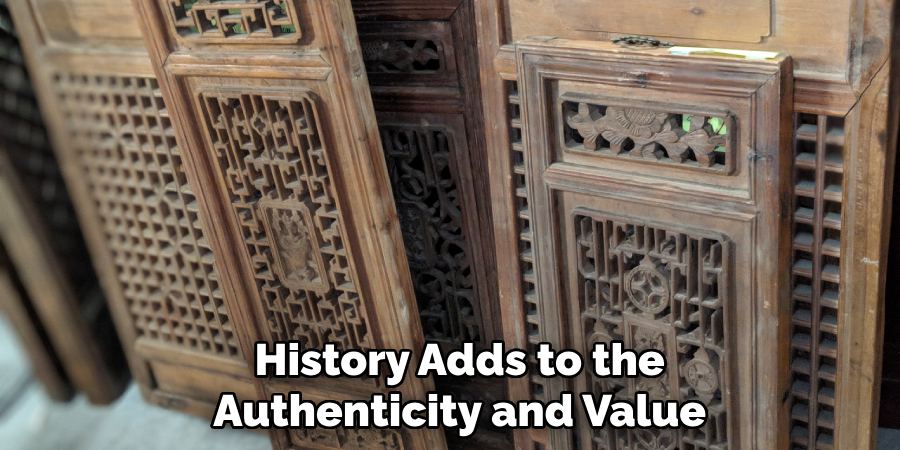
By avoiding these common mistakes, you can improve your ability to differentiate between genuine antique Chinese furniture and modern reproductions.
Conclusion
How to identify antique Chinese furniture can be a rewarding but challenging endeavor.
By following a systematic approach that includes examining the construction methods, materials, hardware, finish, and provenance, you can more accurately determine the authenticity of a piece. Additionally, comparing the furniture to known authentic examples and consulting experts can provide further assurance. Remember, the value of antique Chinese furniture lies not only in its aesthetic appeal but also in its historical and cultural significance.
By arming yourself with knowledge and attention to detail, you can navigate the market with confidence and develop a deeper appreciation for these timeless pieces.
